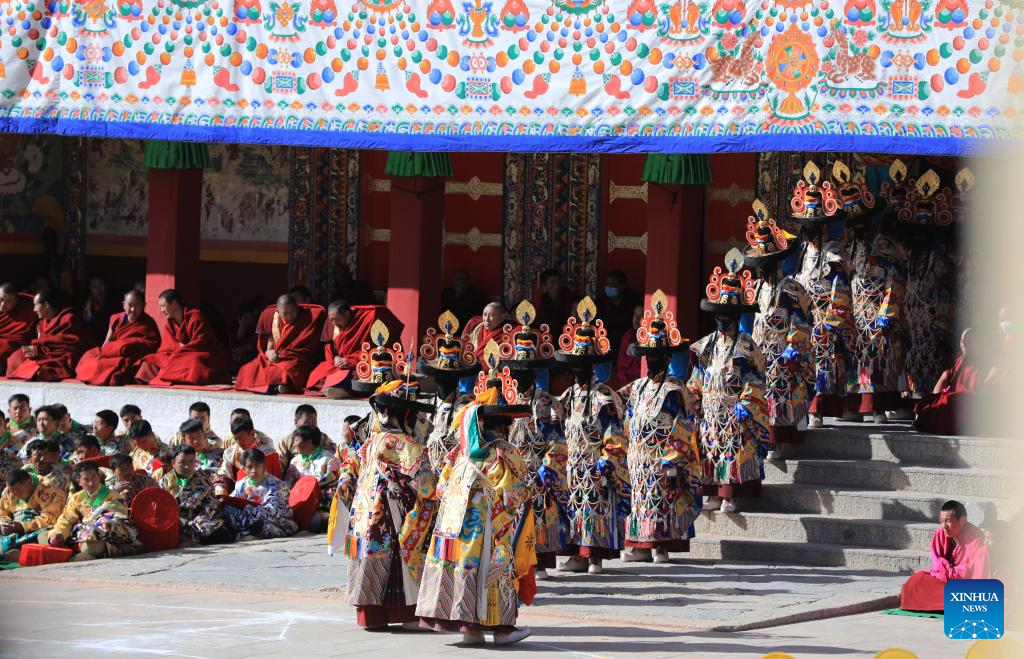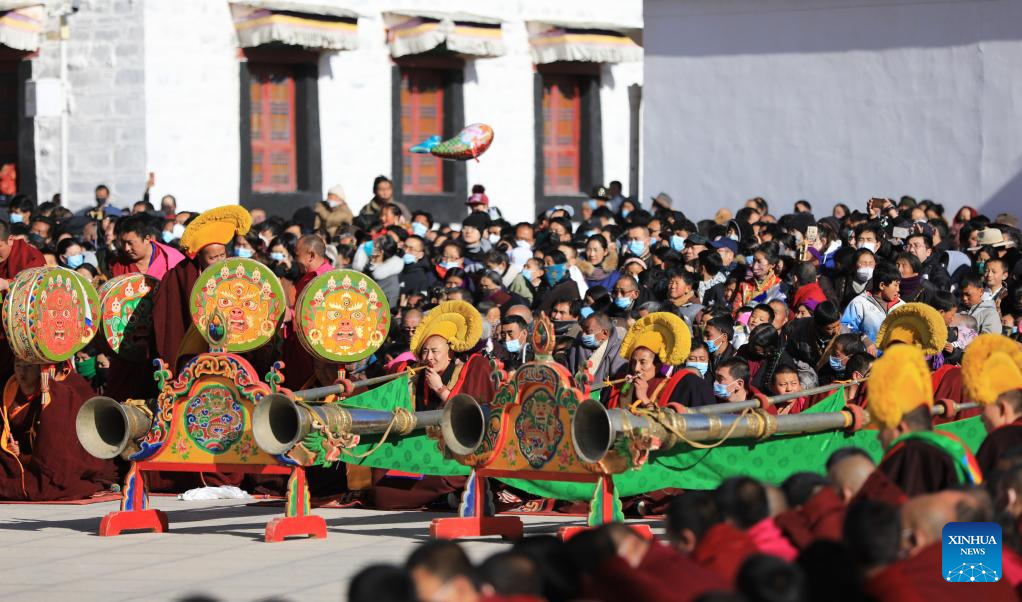
-
Published: 05 February 2023

Edited by| HUXINA
5-JAN.-2023
Dance in China is a highly varied art form, consisting of many modern and traditional dance genres.
The dances cover a wide range, from folk dances to performances in opera and ballet, and may be used in public celebrations, rituals, and ceremonies. There are also 56 officially recognized ethnic groups in China, and each ethnic minority group in China also has its own folk dances. Outside of China, the best-known Chinese dances today are the Dragon dance and the Lion dance.
There is a long recorded history of various forms of dance in China. The earliest Chinese character for "dance", written in the oracle bones, is itself a representation of a dancer holding oxtails in each hand. Some Chinese dances today such as dancing with long sleeves have been recorded since the very early periods, dating from at least as early as the Zhou Dynasty. The most important dances of the early period were the ritual and ceremonial music and dances called yayue, and these dances were performed at the imperial court until the Qing dynasty, but only survive today as performances in Confucian ceremonies.

The imperial court from the Qin dynasty onward established various departments responsible for the collection of music and dances, training of performers as well as their performances at the court, such as the Music Bureau and Royal Academy. During the Six Dynasties era (220 - 589 CE), there were strong influences from Central Asia in music and dance. The art of dance reached a peak in the Tang Dynasty, and the dances of the period were highly diverse and cosmopolitan, dances from Central Asia in particular were popular. A great number of dances were recorded in the Tang dynasty, for example, there are over 60 Grand Compositions alone which are large-scale performances from the Tang court, and there were tens of thousands of musicians and dancers at the Imperial palaces.
Dance as an independent art form however declined after the Tang dynasty. The dance began to be absorbed into Chinese opera that started to take shape in the Song and Yuan dynasties, replacing the song and dance of Sui and Tang. Furthermore, from the Song dynasty onwards, the practice of footbinding that may have first arisen from dancers themselves became increasingly popular, which limited the movements of women when the binding became tighter, and famous female dancers became increasingly rare after the Song dynasty. Greater social restrictions placed on women may have also led to the virtual elimination of female dancers by the Qing dynasty. Dance as a separate performance art largely survived in folk traditions. In more recent times, the art of dance in China has enjoyed a resurgence, and modern developments in Chinese dances are continuing apace.
Many of the traditional Chinese dances have a long history. These may be folk dances or dances that were once performed as rituals or as an entertainment spectacle, and some may have been performed in the imperial court. Among the best-known, Chinese traditional dances are the Dragon dance and Lion dance, and both dances were known in earlier dynasties in various forms. A form of lion dance similar to today's lion dance was described as early as the Tang Dynasty, the modern form of the dragon dance however may be a more recent development.
In some of the earliest dances recorded in China, dancers may have dressed as animals and mythical beasts, and during the Han Dynasty, some forms of dragon dance were mentioned. The Dragon dances of the Han Dynasty, however, do not resemble the modern form of the dance. Dragon dances mentioned include a dance performed during a ritual to appeal for rain at times of drought as the Chinese dragon was associated with rain,[acts in the bai xi variety shows where performers dressed up as a green dragon playing the flute, and acts where fish turned into a dragon. Modern Dragon Dance uses a lightweight structure manipulated by a dozen or so men using poles at regular intervals along the length of the dragon, and some forms of the dragon can be very long and involve hundreds of performers. There are more than 700 different dragon dances in China

The lion dance has been suggested to have been introduced from outside China as the lion is not native to China. Suggested origins of the dance include India and Persia, although some have also proposed a native Chinese origin. A detailed description of a lion dance appeared during the Tang Dynasty and it was then recognized as a foreign import, but the dance may have existed in China as early as the third century AD. During the Northern and Southern Dynasties, it had an association with Buddhism. A version of lion dance resembling modern lion dance was described by Tang poet Bai Juyi in his poem "Western Liang Arts" (西凉伎), where the dancers wear a lion costume made of a wooden head, a silk tail, and furry body, with eyes gilded with gold and teeth plated with silver, and ears that move. There are two main forms of the Chinese Lion Dance: the Northern Lion and the Southern Lion. A form of the Lion Dance is also found in Tibet where it is called the Snow Lion Dance.
Folk dances of Han Chinese
Folk dances are important historically in the development of dance in China, some of the earliest dances in court rituals and ceremonies may have evolved from folk dances. Rulers from various dynasties collected folk dances, many of which eventually became court dances. However, at various times there had also been antipathy towards some folk dances and some emperors attempted to ban them.
Many of the folk dances are related to harvest and hunting and the ancient gods associated with them. For example, the Constellation Dance was performed to procure as much seed grain as there are stars in the sky, while the Harpoon Dance was associated with Fuxi who according to the mythology gave the Han people fish net, and the Plough Dance was connected to Shennong, the god of agriculture.
Some examples of Chinese folk dance:
- Yangge - a dance that is common in Northern China.
- Lantern Dance - a dance found in Southern China.
- Errenzhuan
